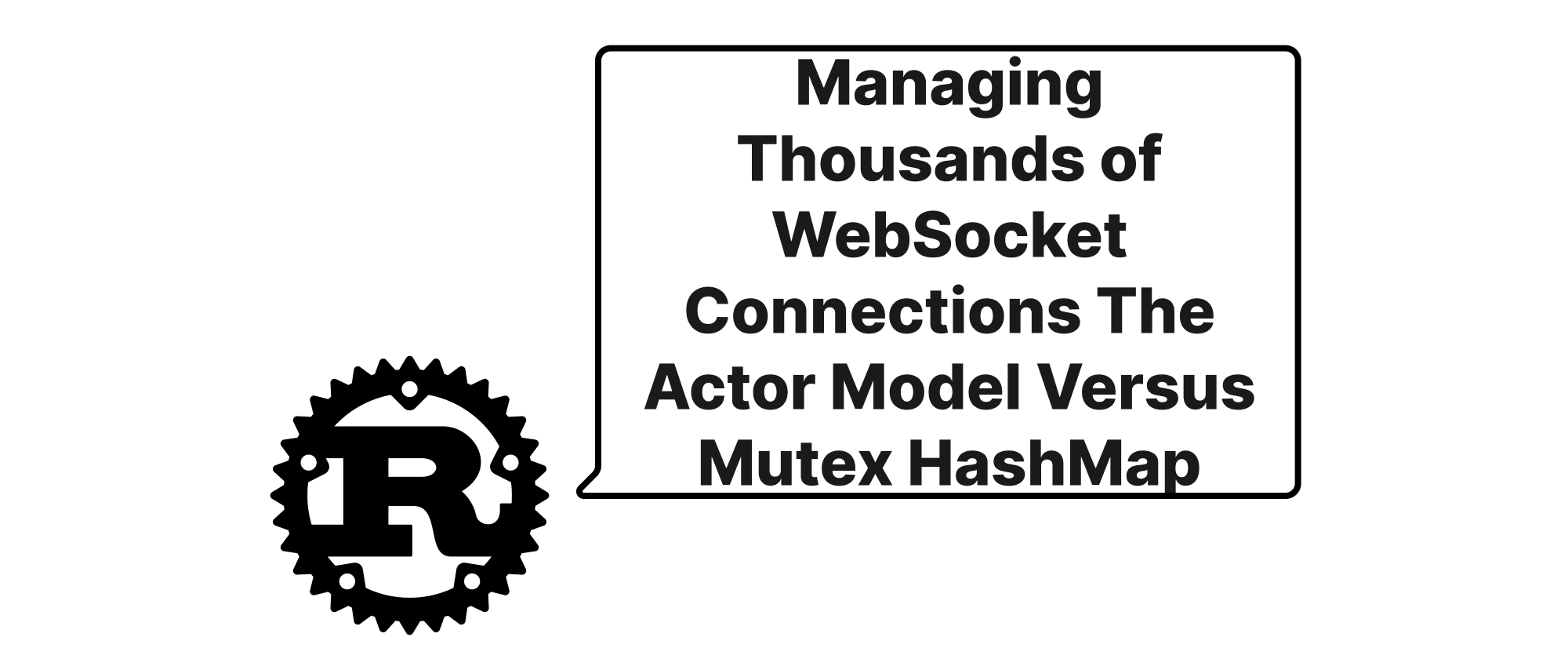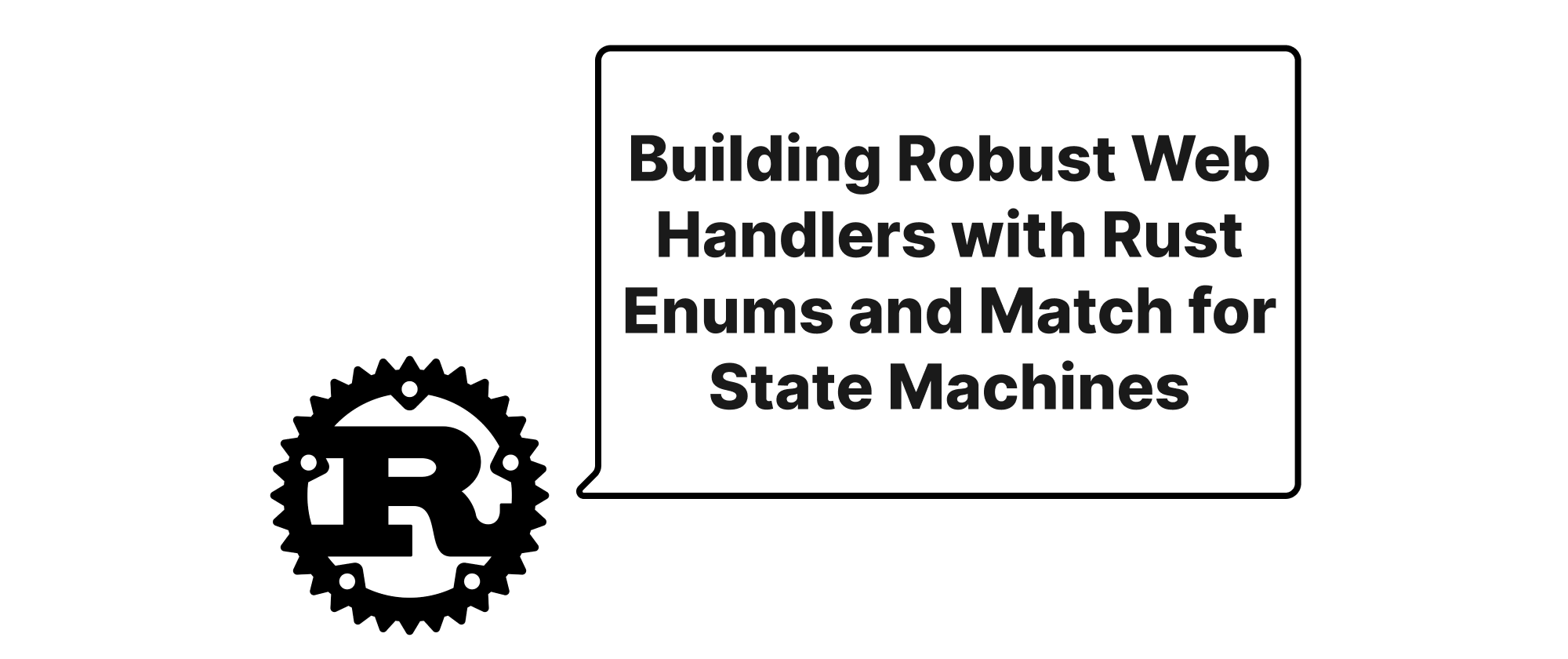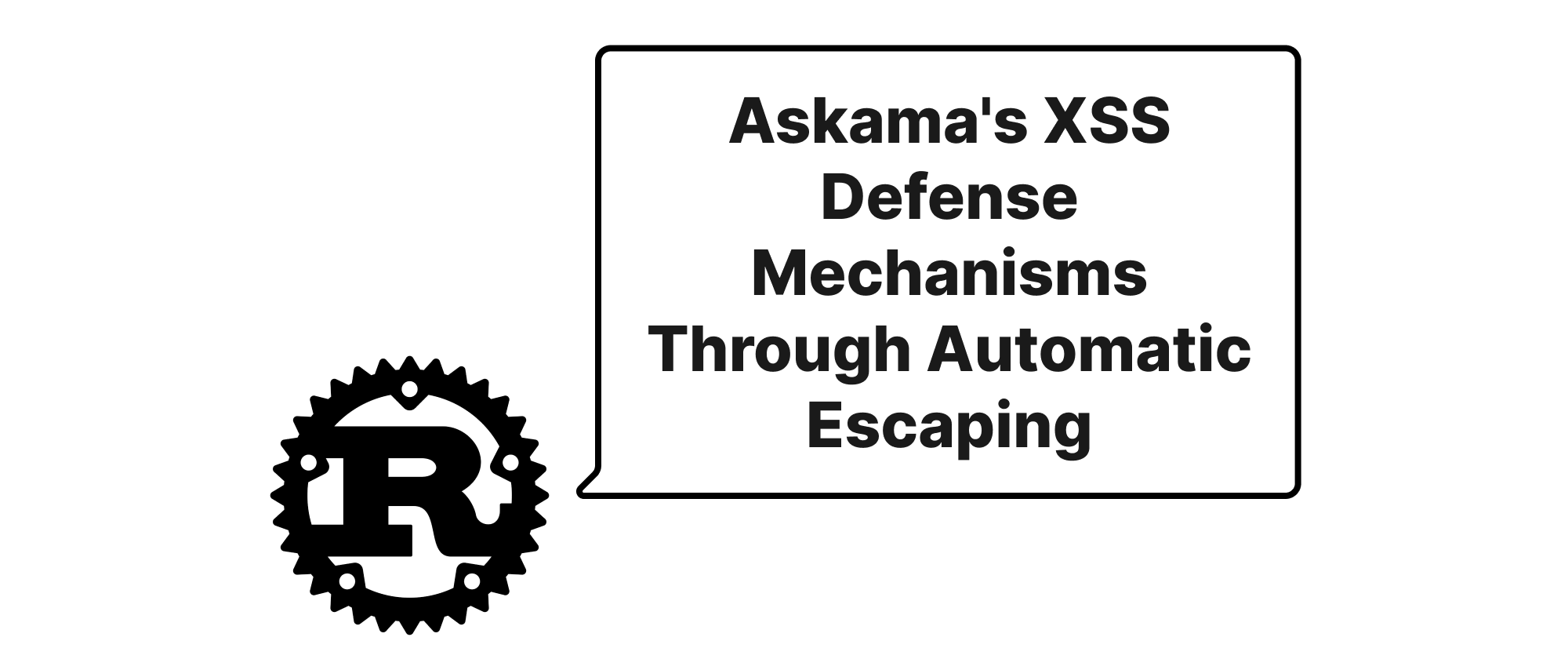Managing Thousands of WebSocket Connections The Actor Model Versus Mutex HashMap
Olivia Novak
Dev Intern · Leapcell

Introduction
In the realm of real-time web applications, WebSocket connections have become indispensable. From chat applications and collaborative tools to live dashboards and gaming, the ability to maintain persistent, low-latency communication between clients and servers is paramount. As these applications scale, managing the state associated with perhaps thousands, or even tens of thousands, of concurrent WebSocket connections presents a significant architectural challenge. Ensuring data consistency, high throughput, and fault tolerance requires careful consideration of concurrency models and data structures. This article will explore two prominent approaches in the Rust ecosystem for handling this challenge: the Actor Model and the more traditional Mutex<HashMap>, dissecting their principles, implementations, and practical implications for managing vast numbers of connections.
Core Concepts for Scalable Connection Management
Before diving into the two main approaches, let's establish a common understanding of the core concepts crucial for managing concurrent WebSocket connections effectively in Rust.
WebSocket Connection State
Each active WebSocket connection often has associated data, such as the user ID, session information, subscription details to various topics, or even the Sender half of a channel to send messages back to the client. This "state" needs to be accessible and modifiable by different parts of the application as messages arrive or events occur.
Concurrency and Parallelism
Rust's ownership and borrowing system is a powerful tool for preventing data races at compile time. However, when dealing with shared, mutable state across multiple asynchronous tasks (which is common in a WebSocket server), careful patterns are needed.
- Concurrency: Handling multiple tasks interleaved over time, potentially on a single core. This is typical for
async/awaitin Rust. - Parallelism: Executing multiple tasks simultaneously, typically on multiple CPU cores.
Asynchronous Programming (async/await)
Rust's async/await syntax provides a way to write non-blocking code, crucial for I/O-bound operations like network communication. A single thread can manage many WebSocket connections concurrently by yielding control during I/O operations, allowing other tasks to run.
Message Passing
A fundamental concurrency primitive where tasks communicate by sending data to each other rather than sharing mutable memory directly. This often involves channels (e.g., flume, tokio::mpsc).
Shared Mutable State
When multiple tasks need to access and potentially modify the same piece of data, it becomes shared mutable state. Rust offers several mechanisms to manage this safely, primarily Arc (Atomic Reference Counted) for shared ownership and synchronization primitives like Mutex for exclusive access.
Managing Connections The Actor Model
The Actor Model is a powerful paradigm for concurrent computation where "actors" are the universal primitives. Each actor is an independent computational entity that has its own state, behavior, and mailbox. Actors communicate exclusively by sending immutable messages to each other's mailboxes. They process messages one at a time, ensuring that their internal state is never accessed concurrently by multiple senders, thereby eliminating data races by design.
Principle
In the context of WebSocket connections, an Actor Model approach typically involves:
- Connection Actor: Each WebSocket connection could theoretically be an actor, managing its own state and sending/receiving messages. However, for thousands of connections, creating a full-fledged actor per connection might lead to too much overhead.
- Connection Manager Actor: A more common and scalable approach is to have a single "Connection Manager" actor (or a few "shard" actors) that owns and manages the state for all active connections. When a WebSocket client sends a message, it’s forwarded to this Connection Manager actor. When the server needs to send a message to a specific client, it sends a message to the Connection Manager actor, which then looks up the client's sender channel and dispatches the message.
Implementation Example with tokio::mpsc
Let's illustrate with a simplified example using tokio::mpsc channels.
use tokio::net::{TcpListener, TcpStream}; use tokio::sync::{mpsc, Mutex}; use tokio_tungstenite::{accept_async, tungstenite::Message}; use futures_util::{StreamExt, SinkExt}; use std::collections::HashMap; use std::sync::Arc; // --- Messages for the Connection Manager Actor --- #[derive(Debug)] enum ConnectionManagerMessage { Register { id: u32, sender: mpsc::Sender<Message>, }, Unregister { id: u32, }, // Example: Broadcast to all or send to specific Broadcast { msg: String, }, SendToClient { id: u32, msg: String, }, } // --- Connection Manager Actor --- struct ConnectionManagerActor { connections: HashMap<u32, mpsc::Sender<Message>>, next_client_id: u32, } impl ConnectionManagerActor { fn new() -> Self { ConnectionManagerActor { connections: HashMap::new(), next_client_id: 0, } } async fn run(mut self, mut receiver: mpsc::Receiver<ConnectionManagerMessage>) { while let Some(msg) = receiver.recv().await { match msg { ConnectionManagerMessage::Register { id, sender } => { self.connections.insert(id, sender); println!("Client {} registered. Total: {}", id, self.connections.len()); } ConnectionManagerMessage::Unregister { id } => { self.connections.remove(&id); println!("Client {} unregistered. Total: {}", id, self.connections.len()); } ConnectionManagerMessage::Broadcast { msg } => { for (_id, sender) in &self.connections { let _ = sender.send(Message::text(msg.clone())).await; } } ConnectionManagerMessage::SendToClient { id, msg } => { if let Some(sender) = self.connections.get(&id) { let _ = sender.send(Message::text(msg)).await; } else { eprintln!("Client {} not found for targeted message.", id); } } } } } fn generate_id(&mut self) -> u32 { let id = self.next_client_id; self.next_client_id += 1; id } } // --- WebSocket Handler Task --- async fn handle_connection( raw_stream: TcpStream, manager_sender: mpsc::Sender<ConnectionManagerMessage>, client_id: u32, ) { let ws_stream = match accept_async(raw_stream).await { Ok(ws) => ws, Err(e) => { eprintln!("Error during WebSocket handshake: {}", e); return; } }; let (mut ws_sender, mut ws_receiver) = ws_stream.split(); let (tx, mut rx) = mpsc::channel::<Message>(100); // Channel for sending messages to this specific client // Register client with the manager let _ = manager_sender.send(ConnectionManagerMessage::Register { id: client_id, sender: tx }).await; // Task to send messages from manager to client let send_to_client_task = tokio::spawn(async move { while let Some(msg) = rx.recv().await { if let Err(e) = ws_sender.send(msg).await { eprintln!("Error sending message to client {}: {}", client_id, e); break; } } }); // Task to receive messages from client and forward to manager (or process directly) while let Some(msg) = ws_receiver.next().await { match msg { Ok(Message::Text(text)) => { println!("Received from client {}: {}", client_id, text); // Example: client sends a broadcast request if text == "broadcast" { let _ = manager_sender.send(ConnectionManagerMessage::Broadcast { msg: format!("Hello from client {}", client_id) }).await; } else { // Or simply echo back let _ = manager_sender.send(ConnectionManagerMessage::SendToClient { id: client_id, msg: format!("Echo: {}", text) }).await; } } Ok(Message::Ping(_)) => { let _ = ws_sender.send(Message::Pong(vec![])).await; } Ok(Message::Close(_)) => { println!("Client {} disconnected.", client_id); break; } Err(e) => { eprintln!("Error receiving from client {}: {}", client_id, e); break; } _ => {} // Ignore other message types for simplicity } } println!("Client handler for {} shutting down.", client_id); let _ = manager_sender.send(ConnectionManagerMessage::Unregister { id: client_id }).await; send_to_client_task.abort(); // Stop the sender task } #[tokio::main] async fn main() { let listener = TcpListener::bind("127.0.0.1:8080").await.expect("Can't listen"); println!("Listening on: 127.0.0.1:8080"); let (manager_sender, manager_receiver) = mpsc::channel::<ConnectionManagerMessage>(1000); // Channel for manager messages let mut manager_actor = ConnectionManagerActor::new(); let manager_sender_clone = manager_sender.clone(); // Clone for the main loop // Spawn the Connection Manager Actor tokio::spawn(async move { manager_actor.run(manager_receiver).await; }); loop { let (stream, _) = listener.accept().await.expect("failed to accept"); let client_id = { let mut guard = manager_actor.next_client_id; // Temporary access for ID generation, careful here // In a real actor model, ID generation would be a message to the manager // For simplicity, we'll assume manager_actor is mutable here. // A better way would be the manager sending a message BACK with the assigned ID. let id = guard; guard += 1; id }; tokio::spawn(handle_connection(stream, manager_sender_clone.clone(), client_id)); } }
(Note: The ID generation in main for the Actor Model example is simplified. In a pure actor model, even ID generation would be a message to the actor, or the actor would assign an ID upon Register and send it back to the client handler.)
Application Scenarios
The Actor Model is particularly well-suited for:
- Complex state transitions: When connection state can change significantly based on various incoming messages.
- Service discovery/routing: An actor can manage which clients are subscribed to which topics and route messages accordingly.
- Decoupled components: It inherently promotes loose coupling, making systems easier to reason about and test.
Managing Connections Mutex<HashMap>
The Mutex<HashMap> approach is a more direct way to manage shared state in Rust. It involves protecting a HashMap (where keys might be connection IDs and values are sender halves or full connection objects) with a tokio::sync::Mutex (or std::sync::Mutex if not in an async context), and typically wrapping it in an Arc for shared ownership across tasks.
Principle
When a task needs to access or modify the shared connection state:
- It acquires a lock on the
Mutex. This blocks other tasks from acquiring the lock until it's released, ensuring exclusive access. - It performs the required operations on the
HashMap. - It releases the lock.
This mechanism explicitly prevents data races by serializing access to the shared data.
Implementation Example with Arc<Mutex<HashMap>>
use tokio::net::{TcpListener, TcpStream}; use tokio::sync::{mpsc, Mutex}; use tokio_tungstenite::{accept_async, tungstenite::Message}; use futures_util::{StreamExt, SinkExt}; use std::collections::HashMap; use std::sync::Arc; // Shared state for all connections struct SharedState { connections: Mutex<HashMap<u32, mpsc::Sender<Message>>>, next_client_id: Mutex<u32>, } impl SharedState { fn new() -> Self { SharedState { connections: Mutex::new(HashMap::new()), next_client_id: Mutex::new(0), } } } // --- WebSocket Handler Task --- async fn handle_connection_mutex( raw_stream: TcpStream, state: Arc<SharedState>, ) { let ws_stream = match accept_async(raw_stream).await { Ok(ws) => ws, Err(e) => { eprintln!("Error during WebSocket handshake: {}", e); return; } }; let (mut ws_sender, mut ws_receiver) = ws_stream.split(); let (tx, mut rx) = mpsc::channel::<Message>(100); // Channel for sending messages to this specific client let client_id = { let mut next_id = state.next_client_id.lock().await; let id = *next_id; *next_id += 1; id }; println!("New client connected, ID: {}", client_id); // Register client with the shared state { let mut connections = state.connections.lock().await; connections.insert(client_id, tx); println!("Client {} registered (Mutex). Total: {}", client_id, connections.len()); } // Task to send messages from manager to client let send_to_client_task = tokio::spawn(async move { while let Some(msg) = rx.recv().await { if let Err(e) = ws_sender.send(msg).await { eprintln!("Error sending message to client {}: {}", client_id, e); break; } } }); // Task to receive messages from client and process/forward while let Some(msg) = ws_receiver.next().await { match msg { Ok(Message::Text(text)) => { println!("Received from client {} (Mutex): {}", client_id, text); // Example: Broadcast to all if text == "broadcast" { let connections = state.connections.lock().await; for (&id, sender) in connections.iter() { if id != client_id { // Don't send back to self for broadcast example let _ = sender.send(Message::text(format!("Broadcast from {}: {}", client_id, text))).await; } } } else { // Echo back to sender let connections = state.connections.lock().await; if let Some(sender) = connections.get(&client_id) { let _ = sender.send(Message::text(format!("Echo (Mutex): {}", text))).await; } } } Ok(Message::Ping(_)) => { let _ = ws_sender.send(Message::Pong(vec![])).await; } Ok(Message::Close(_)) => { println!("Client {} disconnected (Mutex).", client_id); break; } Err(e) => { eprintln!("Error receiving from client {} (Mutex): {}", client_id, e); break; } _ => {} // Ignore other message types for simplicity } } println!("Client handler for {} shutting down (Mutex).", client_id); // Unregister client from shared state { let mut connections = state.connections.lock().await; connections.remove(&client_id); println!("Client {} unregistered (Mutex). Total: {}", client_id, connections.len()); } send_to_client_task.abort(); // Stop the sender task } #[tokio::main] async fn main() { let listener = TcpListener::bind("127.0.0.1:8081").await.expect("Can't listen"); println!("Listening on: 127.0.0.1:8081 (Mutex)"); let shared_state = Arc::new(SharedState::new()); loop { let (stream, _) = listener.accept().await.expect("failed to accept"); tokio::spawn(handle_connection_mutex(stream, Arc::clone(&shared_state))); } }
Application Scenarios
The Mutex<HashMap> approach is often preferred when:
- Simplicity is key: For applications where the shared state is relatively simple and the number of operations on it is not extremely high,
Mutexis conceptually easier to grasp and implement. - Less overhead: Without the indirection of message passing, direct
Mutexaccess can sometimes offer lower latency for individual operations, though this can be offset by contention. - Direct access: When many different parts of the application need to directly query or modify subsets of the connection information.
Comparison and Considerations
| Feature | Actor Model (ConnectionManagerActor) | Mutex<HashMap> |
|---|---|---|
| Concurrency Model | Message passing, single-threaded processing per actor | Shared memory, explicit locking |
| Data Safety | Inherently safe by message-passing design; actor owns its state. | Safe via Mutex (guarantees exclusive access). |
| Scalability | Highly scalable by sharding actors or distributing load among manager actors. Processing messages serially in a single actor can be a bottleneck. | Can be a bottleneck under high contention as Mutex acquisition blocks. Good for moderate loads. |
| Complexity | Higher initial setup boilerplate due to messages and channels definitions. Easier to reason about business logic once set up. | Simpler to set up initially. Can become complex to manage deadlocks or ensure proper lock release in intricate scenarios. |
| Performance | Overhead of message passing. Good throughput by avoiding locks on actual data. | Overhead of Mutex locking/unlocking. Can have higher latency under contention. |
| Testability | Easier to test actors in isolation by sending predefined messages and checking responses. | More involved testing to simulate concurrent access and check for race conditions. |
| Debugging | Messages provide a clear audit trail of events. Easier to trace state changes. | Debugging deadlocks or subtle race conditions can be challenging. |
| Failure Isolation | An actor failure generally isolates to that actor. | A bug in accessing shared state could destabilize the whole system. |
When to Choose Which
-
Choose Actor Model when:
- Your application logic for connections is complex, involves multiple distinct states, or has specific routing requirements.
- You anticipate very high concurrency (thousands of messages per second) where
Mutexcontention would be a significant bottleneck. - You value explicit control over state transitions and prefer a system where components communicate only via well-defined messages.
- Maintainability and testability in a large distributed system are priorities.
-
Choose
Mutex<HashMap>when:- The shared state is relatively simple (e.g., just storing client senders).
- The number of concurrent operations directly modifying the shared map is moderate, and contention isn't expected to be a major issue.
- You need direct, potentially faster access to the shared state (when not contended).
- Simplicity of initial implementation is a higher priority.
It's also worth noting that these aren't mutually exclusive. You might use an Actor Model for high-level connection management and overall system coordination, while individual actors (or even parts of the system outside the actor model) might use Mutex for their internal, limited-scope shared mutable state.
Conclusion
Managing thousands of WebSocket connections in Rust necessitates a robust concurrency strategy. Both the Actor Model via central manager actors and the Arc<Mutex<HashMap>> pattern offer valid approaches. The Actor Model provides a powerful, inherently safe, and scalable design for complex systems by enforcing message-based communication and isolating state, making it ideal for highly interactive and data-rich real-time applications. Conversely, Mutex<HashMap> offers a simpler, more direct solution for less complex shared state, often being sufficient and performant for moderate loads with fewer architectural layers. The best choice ultimately depends on the specific requirements of your application, balancing between complexity, anticipated load, and the need for stringent state consistency guarantees. Both patterns, when applied judiciously, empower Rust developers to build highly performant and reliable real-time services.


